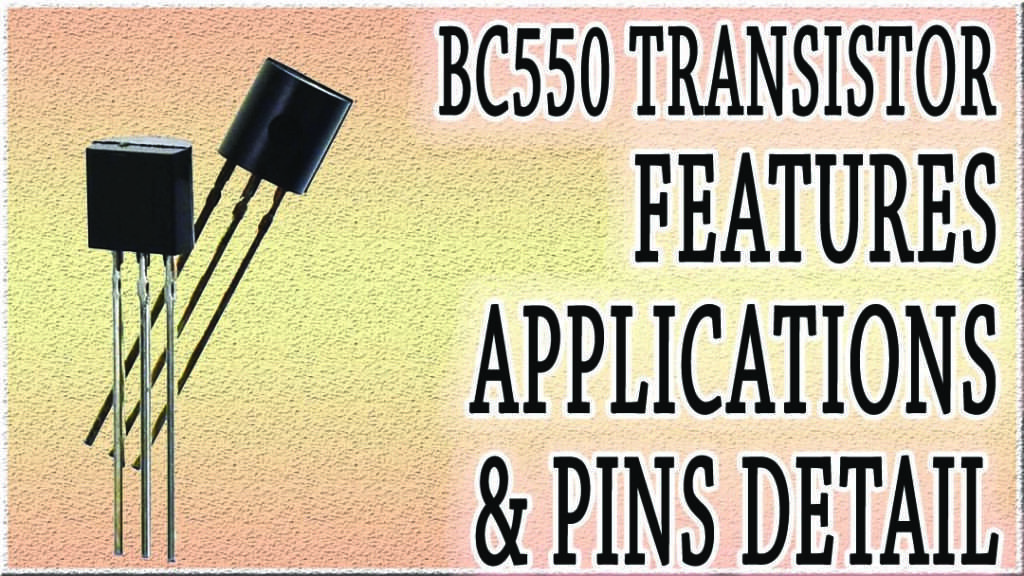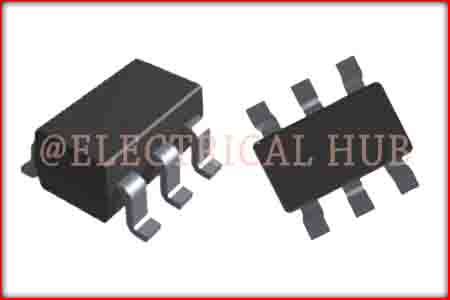BC550 Transistor: An Important Component for Electronic Circuits
Table of Contents
Introduction
The BC550 transistor is a popular electronic component known for its versatility and wide range of applications. Whether you’re an electronics enthusiast, a hobbyist, or a professional engineer, understanding the capabilities and characteristics of the BC550 transistor is crucial for designing and building electronic circuits.

In this article, we will delve into the key features and uses of the BC550 transistor, exploring its performance, specifications, and its role in amplification and switching circuits.
The BC 550 transistor, also referred to as the BC550 NPN transistor, belongs to the BC5xx series of general-purpose transistors. Its compact size, affordable price, and dependable performance have made it a favorite among circuit designers for several decades. The BC550 transistor is widely available and is commonly used in various applications, including audio amplifiers, signal processing circuits, oscillator circuits, and voltage regulators, to name just a few.
When it comes to performance, the BC 550 transistors offer excellent amplification capabilities with a low noise profile. Its NPN (negative-positive-negative) configuration allows for easy integration into both analog and digital circuits. With a maximum collector current of 100 mA and a power dissipation of 500 mW, the BC550 transistors can handle moderate power loads, making it suitable for a broad range of applications.
The BC 550 transistor is a reliable and versatile component that finds extensive use in various electronic circuits. Its compact size, affordability, and dependable performance make it a go-to choice for both hobbyists and professionals alike. Whether you are designing audio amplifiers, signal processing circuits, or voltage regulators, the BC 550 transistor can deliver the amplification and switching capabilities required for your project. Explore the possibilities of the BC550 transistor and unlock its potential in your electronic designs.
BC550 Transistor Features
The BC550 transistor offers a range of notable features that contribute to its versatility and popularity in electronic circuits. Let’s explore some of its key features:
NPN Configuration: The BC 550 transistor is an NPN (negative-positive-negative) transistor, which allows it to function as an amplifier and switch in various applications. Its NPN configuration makes it compatible with a wide range of analog and digital circuits.
Versatility: The BC 550 transistor is renowned for its versatility, making it suitable for a diverse range of applications. It finds application in audio amplifiers, signal processing circuits, oscillator circuits, voltage regulators, and more. Its flexibility enables designers to incorporate it into different types of electronic systems.
Amplification Capabilities: With its high current gain, the BC 550 transistor excels in amplification tasks. It efficiently boosts weak signals to desired levels, allowing for accurate signal processing and transmission in electronic circuits. Its low noise profile ensures excellent signal quality.
Switching Performance: The BC 550 transistor also demonstrates impressive switching capabilities. It can swiftly and precisely control the flow of signals, making it ideal for applications that require signal modulation or digital switching.
Moderate Power Handling: The BC 550 transistor can handle moderate power loads with a maximum collector current of 100 mA and a power dissipation of 500 mW. This feature makes it suitable for applications that require amplification and switching functions within specific power ranges.
Compact Size and Availability: The BC550 transistor is available in a compact package, making it easy to integrate into electronic circuits with limited space. Additionally, it is widely accessible and commonly stocked by electronics suppliers, ensuring its availability for various projects.
Reliability: The BC 550 transistor is known for its reliability and robust construction. It delivers consistent performance over time, making it a dependable choice for electronic designs.
The BC 550 transistor offers versatility, amplification capabilities, efficient switching performance, moderate power handling, compact size, and reliability. These features contribute to its popularity and make it an essential component in a wide range of electronic circuits.
bc550 transistor Specifications
The BC550 transistor comes with specific specifications that define its electrical characteristics and performance. Here are the commonly referenced specifications for the BC550 transistor:
Type: NPN (Negative-Positive-Negative)
The BC550 transistor is an NPN transistor, which signifies the arrangement of its three semiconductor layers.
Maximum Collector Current (Ic): 100 mA
This specification determines the maximum current that can safely flow through the collector terminal of the transistor. It helps in selecting appropriate load resistors and ensures the transistor operates within its safe operating limits.
Maximum Power Dissipation (Pd): 500 mW
The maximum power dissipation indicates the maximum amount of power the transistor can handle without exceeding its temperature limits. It is important to consider this specification to prevent overheating and ensure reliable operation.
Maximum Voltage Ratings
Collector-Base Voltage (Vcbo): 50 V
Collector-Emitter Voltage (Vceo): 45 V
Emitter-Base Voltage (Vebo): 5 V
These voltage ratings indicate the maximum voltage that can be applied across the respective terminals without causing damage to the transistor.
DC Current Gain (hFE): Typically 110 to 800
The DC current gain, often denoted as hFE or β, represents the amplification factor of the transistor. It signifies the ratio of collector current to base current and determines the amplification capabilities of the transistor.
Transition Frequency (fT): Typically 150 MHz
The transition frequency specifies the frequency at which the transistor transitions from its low-frequency to high-frequency operation. It indicates the maximum frequency at which the transistor can effectively amplify signals.
Package Type: TO-92 or SOT-23
The BC550 transistor is available in different package types, such as TO-92 or SOT-23. These package types provide mechanical support and facilitate easy integration into circuits.
It’s important to note that these specifications are typical values and may vary slightly between different manufacturers or production batches. Referring to the datasheet provided by the manufacturer will provide the most accurate and up-to-date information for the BC550 transistor.
bc550 transistor pinout
The BC550 transistor follows a standard pinout configuration, which is crucial to understand when incorporating it into electronic circuits. The BC550 transistor features three pins: the collector (C), the base (B), and the emitter (E). Here is the pinout diagram for the BC550 transistor:
The collector (C) is denoted by the arrowhead symbol, the base (B) is located in the middle, and the emitter (E) is at the other end. It is important to note that the BC550 transistor is of NPN type, so the emitter is the negative side and the collector is the positive side in relation to the base.
When connecting the BC550 transistor, the collector pin (C) is typically connected to the positive supply voltage, the emitter pin (E) is connected to the ground or common reference point, and the base pin (B) is used for signal input or control.
Understanding the pinout of the BC550 transistor is essential for correctly integrating it into your electronic circuits, ensuring proper functionality and performance.
BC550 Transistor Applications
The BC550 transistor finds extensive use in various electronic applications due to its versatility and reliable performance. Some common applications of the BC550 transistor include:
Audio Amplifiers: The BC550 transistor is frequently employed in audio amplifiers, both for small signal amplification and as pre-amplifiers in audio systems. Its high current gain and low noise characteristics make it well-suited for amplifying audio signals with good fidelity.
Signal Processing Circuits: The BC550 transistor plays a vital role in signal processing circuits such as filters, equalizers, and tone control circuits. Its amplification capabilities allow for precise signal manipulation and conditioning.
Oscillators: The BC550 transistor is utilized in oscillator circuits to generate stable and accurate waveforms at specific frequencies. It is commonly employed in audio oscillators, function generators, and clock circuits.
Voltage Regulators: The BC550 transistor is an integral component in voltage regulator circuits, which are used to maintain a steady and regulated output voltage. It helps in stabilizing and controlling voltage levels in power supply circuits.
Switching Circuits: Due to its fast switching speeds and precise control, the BC550 transistor is employed in digital switching circuits. It can effectively control the flow of signals in applications such as digital logic gates and microcontroller interfacing.
LED Drivers: The BC550 transistor can be utilized as a driver for light-emitting diodes (LEDs). It allows for current regulation and control to ensure proper operation and protection of LEDs in lighting applications.
Test and Measurement Equipment: The BC550 transistor is also found in various test and measurement equipment, including multimeters, signal generators, and oscilloscopes. It aids in signal conditioning, amplification, and modulation for accurate measurement and analysis.
These are just a few examples of the wide range of applications where the BC550 transistor is commonly used. Its versatility, amplification capabilities, and switching performance make it a popular choice for diverse electronic circuits across different industries.
bC550 transistor equivalent
The BC550 transistor has several equivalents or substitutes that can be used interchangeably in electronic circuits. These equivalents have similar electrical characteristics and can perform comparable functions. Here are some commonly used equivalents for the BC550 transistor:
2N3904: The 2N3904 is an NPN transistor that is widely considered an equivalent to the BC550. It has similar electrical specifications and can be used as a direct replacement in many applications.
PN2222A: The PN2222A is another NPN transistor that is commonly used as an equivalent to the BC550. It has comparable characteristics and can be substituted in various circuit designs.
2SC1815: The 2SC1815 is an NPN transistor that can be used as an alternative to the BC550. It has similar performance and can be utilized in similar applications.
2N4401: The 2N4401 is an NPN transistor that can be considered as a substitute for the BC550. It has similar specifications and can be used in various electronic circuits.
S8050: The S8050 is an NPN transistor that can serve as an equivalent to the BC550. It has compatible electrical characteristics and can be used as a replacement in many applications.
When selecting an equivalent transistor, it is essential to refer to the datasheets and compare the specifications to ensure compatibility and proper functioning within the specific circuit. It’s also worth noting that while these transistors are commonly used as equivalents, some circuit designs or specific requirements may warrant further consideration and evaluation.
Conclusion
In conclusion, the BC550 transistor is a versatile and reliable electronic component that offers a range of features and capabilities. Its NPN configuration, moderate power handling, and high current gain make it suitable for a wide variety of applications, including amplification and switching circuits. The BC550 transistor’s compact size, availability, and robust construction further enhance its appeal to engineers and hobbyists alike.
With its excellent amplification and switching performance, the BC550 transistor can effectively process signals with low noise and high precision. Its versatility allows for integration into diverse electronic circuits, including audio amplifiers, signal processing circuits, oscillators, and voltage regulators.
Furthermore, the BC550 transistor demonstrates reliability and consistent performance, making it a trusted choice for electronic designs. Its compatibility with other commonly used transistors, such as the 2N3904 and PN2222A, provides flexibility in circuit design and component selection.
Overall, the BC550 transistor’s features, including its versatility, amplification capabilities, switching performance, moderate power handling, compact size, and reliability, establish it as an essential component in numerous electronic circuits. By leveraging the BC550 transistor’s capabilities, engineers and hobbyists can unlock a wealth of possibilities and create innovative and functional electronic systems.
Follow us on LinkedIn”Electrical Insights” to get the latest updates in Electrical Engineering. You can also Follow us LinkedIn to see our latest posts.




